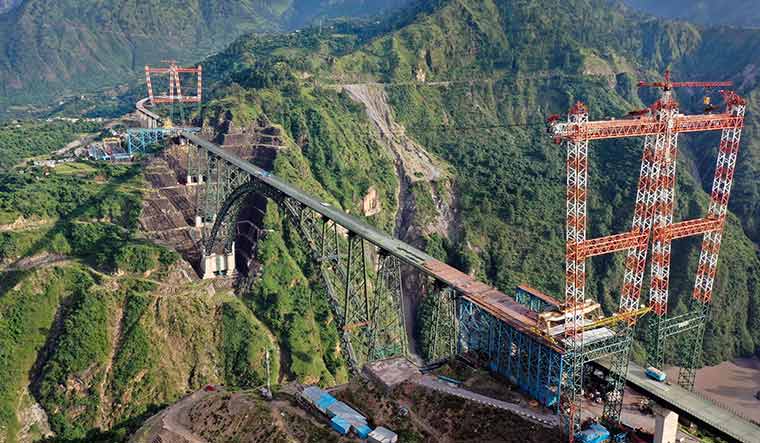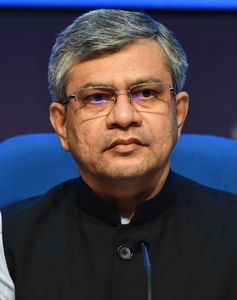India’s governance model witnessed its point of inflection in 2014 when people gave their clear mandate to Prime Minister Narendra Modi. The people's mandate in 2014 was for ‘change’, and in 2019 came a stronger mandate for ‘continuity’. The journey of India’s aspirations from change to continuity is now accelerating on the path of development and empowerment. Prime Minister Modi’s promise of “Gareeb Kalyan” transformed people's lives on the ground. In the last nine years, he stood by the poor at times when they most needed him. His welfare model, “Sabka Saath, Sabka Vikas”, is being implemented to ensure 100 per cent saturation of government schemes. Programmes like broadband for all, tap water for all, housing for all, electricity for all, LPG for all, toilets for all, direct benefit transfers, crop insurance, increased minimum support price and Kisan Samman Nidhi for farmers, pension schemes for small entrepreneurs and the working class, all epitomise this approach centred around empowerment.
For decades, politicians in India used the poor as a tool to come to power. Prime Minister Modi used his power to empower the poor. The safety nets of financial inclusion, security and empowerment fundamentally changed people's lives. India today has completely new stories to share.
Every poor household used to be surrounded by uncertainty. Prime Minister Modi’s governance kept its focus on breaking barriers. Reforms and schemes by the government have ensured certainty for the poor. Many barriers broke for a woman who now owns a Jan Dhan account in the bank by her name. She inevitably gets her benefits and subsidies directly into her account. She can plan her expenses and savings. An enterprising woman who wishes to earn her livelihood by selling products on a ‘thela’ (cart) now gets a collateral-free loan under the PM SVAnidhi scheme. Access to health care remained a barrier till the Ayushman Bharat Yojana ensured free treatment worth Rs5 lakh and the Jan Aushadhi Kendra provided medicines at 40 per cent to 50 per cent less price.
There were barriers between the government and beneficiaries. Prime Minister Modi’s vision of using technology to bridge this divide came in the form of the Digital India programme. The Jan Dhan-Aadhaar-mobile trinity ensures direct benefit transfers without any leakages.
At the click of a button, 11 crore farmers are getting the support of Rs6,000 annually under the PM Kisan Samman Nidhi. People in more than 11 crore households do not have to walk a distance to fetch water for their daily needs. “Har ghar nal se jal” ensured tap water at their home.
Like the poor, even the railways was ignored for 60 years since independence. In the last nine years, the railways has transformed ordinary people's travel experience. From station facilities, even in smaller towns, to the safety and security of passengers, train travels are making journeys happier for everyone.
The foundation of Prime Minister Modi’s nine years of governance is standing strong and tall on three pillars―the prime minister's decisive leadership, Atmanirbhar capabilities of New India and Gareeb Kalyan.
The pandemic that disrupted the world also initially caught everyone unprepared when even sourcing adequate PPE kits was challenging. Amidst such a crisis, our prime minister addressed the nation on May 12, 2020, and raised the clarion call of “Atmanirbhar Bharat”.
So where are we today? We are the world’s second-largest mobile phone manufacturing hub. From importing 98 per cent of mobile phones, 98 per cent of mobile phones used in India are made in India. The biggest brands in the world are now manufacturing the latest and upcoming handset models. In the last financial year, we exported handsets worth Rs90,000 crore. Today, we have two lakh sites across India radiating 5G network within eight months after the launch of 5G services by Prime Minister Modi. We are also executing the installation of an indigenous end-to-end 4G/5G network. We already have 127 patents in 6G technology.
India became self-reliant in fighting Covid-19 by developing its indigenous vaccine and building a Cowin platform to run the world’s biggest vaccination drive achieving 220 crore doses. India’s digital public infrastructure framework ensured everyone was vaccinated and carried certificates digitally, while the most developed nations were moving with paper prints. Prime Minister Modi's decisive leadership ensured that India mastered some of the major technologies and the Vande Bharat train was one of them. Fully designed and manufactured in India by our engineers, Vande Bharat has got the world's attention for its design, modern amenities and acceleration. Vande Bharat trains of Atmanirbhar Bharat are connecting every part of the country. Atmanirbhar Bharat was not only about making in India. It was also about catching up and leading the world with the speed and scale of making in India. This is the new mindset with which the government operates and executes projects.
Prime Minister Modi also kick-started the era of transformation, modernisation and manufacturing in Indian Railways. India’s most anticipated bullet train project has now completed 191km of pier work. From 2009 to 2014, tunnelling was done at an average of 12.3 km/year; and last year, Indian Railways did about 90km of tunnelling, which is seven times more than the average. We laid 5,243km of new rail line to augment the capacity this year, equivalent to Switzerland's entire rail network. The pace of rail line electrification today is 18km per day. The near completion of the world's highest rail arch bridge, the Chenab bridge, and India's first cable-stayed railway bridge, Anji Khad bridge in Jammu & Kashmir, are adding to India's glory. The successful train trial through India's first underwater railway tunnel and station under the Hooghly River in Kolkata adds to these engineering marvels.
Infrastructure improves the quality of life for every citizen, irrespective of caste, religion or political thought. Better amenities create better opportunities for young citizens. Better logistics improves the productivity of our enterprises. An investment of Rs100 adds Rs360 to the economy. About Rs240 of this Rs360 goes to small and medium enterprises. Therefore, the investment of Rs10 lakh crore in infrastructure has resulted in India emerging as a ‘bright spot’ in an otherwise troubled world.
Our prime minister decided to focus on an investment-led growth model and kept increasing the capital investment with every budget, ensuring that its multiplier effect in the economy feeds into itself. He offered very focused support to 80 crore poor by providing them food under the PM Garib Kalyan Anna Yojana and over 220 crore free vaccine doses, while over 11 crore farmers benefited from the PM Kisan Samman Nidhi.
We are now the world's fifth largest economy and with the current growth trajectory, we will get on to the fourth place in the next two years. With the high growth and moderate inflation that Prime Minister Modi’s economic reforms maintained for India, the world is very optimistic about India. The nation felt proud when US President Joe Biden praised Prime Minister Modi, saying, “You are demonstrating that democracies matter.” Pride also fills our hearts when the UN accepts India’s proposal to celebrate 2023 as the “International Year of the Millet” and even Japan shows interest in joining our Unified Payments Interface.
We all remember how the nation was left to feel gloomy and hopeless when the UPA government was close to the end of its second term. India is feeling just the opposite after nine years under the leadership of Prime Minister Modi. India is confident, capable, uplifted and empowered. Living up to the people’s mandate of change and continuity, Prime Minister Modi's leadership will ensure consistency in India's growth path. India is certain that Prime Minister Modi has laid a strong foundation for 140 crore people to aspire and work consistently for ‘Viksit Bharat’ by 2047.
Ashwini Vaishnaw, Union minister for railways, communication, electronics & information technology



